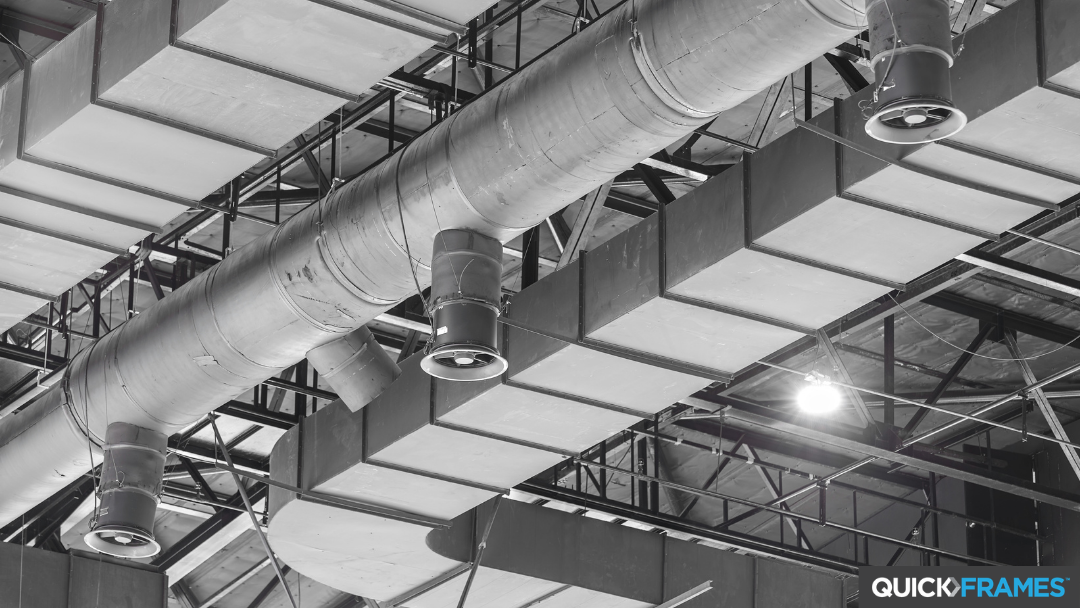Rising Tech Trends to Watch in the HVAC Market
By Gregg Kussmann, Partner & Director of Business Development, QuickFrames
It’s no secret we’re big fans of the HVAC industry (pun intended). Our structural support frames are designed primarily for HVAC units, fans and other rooftop units in commercial buildings. So we were pleased to read in a recent report that the U.S. HVAC services market is predicted to rise in value from $25.6 billion in 2019 to $35.8 billion by 2030. The predicted growth in the industry is a really positive sign for all of us and is being driven, in part, by two emerging HVAC technologies worth paying attention to.
1. A Renewed Focus on Smart Systems & Energy Efficiency
Technology has touched all industries; in many cases, completely disrupting them. But only now is the adoption of smart HVAC systems in commercial construction becoming truly widespread. There are several varieties of applications, but the most common are devices that are Internet of Things (IoT) enabled and connected to other smart devices.
Many companies are using IoT sensors in buildings to gather measurements on indoor air temperature, outdoor radiant temperature, indoor and outdoor humidity, air speed and circulation patterns – and more. All of this data can be used in real-time to adjust heating and cooling, resulting in far more efficient energy usage. Considering that HVAC systems are responsible for up to 60% of a commercial building’s energy usage, this is a big draw for building owners. And, not only is the reduction in cost desirable, but this technology also enables all stakeholders on building projects to become more mindful of their environmental impact.
The data collected and analyzed through these systems can further be used to identify wasteful trends and correct them, as well as to contextualize patterns against data from other IoT devices in a building. For example, a building may have its security system and lighting systems connected, scheduled to turn off and on respectively upon the building’s opening in the morning.
Data from a smart HVAC system may reveal that the building is being cooled for a full hour prior to anyone’s arrival, which means it’s running longer and using more energy than necessary. The cooling can then be automated to coincide with the security system and lights, leaving less work for staff, lowering costs and improving energy efficiency. Smart systems can also track coolant usage in HVAC units in real-time, so maintenance can be requested only when it’s necessary, further saving costs.
2. Creative Use of Augmented Reality (AR) and Virtual Reality (VR)
When AR and VR first became accessible to the masses, it felt like every tech lover’s birthday. But aside from the obvious cool factor of these technologies, they are increasingly being used in inventive ways, specifically in the HVAC industry. Many companies are now using AR and VR to “improve accuracy, efficiency and safety of construction projects.” As an example, users can join a platform through their desktops, and review project designs, identify potential problems (e.g. with a mechanical roof curb) and suggest changes, all inside a virtual VR environment.
Additionally, 3D simulations and VR are being used as another layer of training for folks in the HVAC field. Recently, two companies partnered up to match remote HVAC training with a new, alternative certification pathway for technicians. They were quick to point out that VR training is not intended to replace hands-on training, but rather offers a more convenient, flexible way to gain advanced skills (and more readily measure them). As the CEO of one of the companies pioneering this learning model said, “In a simulated training, you can practice hundreds of in-the-field scenarios in one session that might take years to see in the field.”
How are these technology trends impacting you day-to-day? Are you and your customers benefiting from smart systems and the energy efficiency they can bring? Have you explored ways to use tech like AR and VR to further collaboration and training? We’d love to hear your thoughts. And, make sure to check out how our structural support frames provide another way for you to work smart as well.


